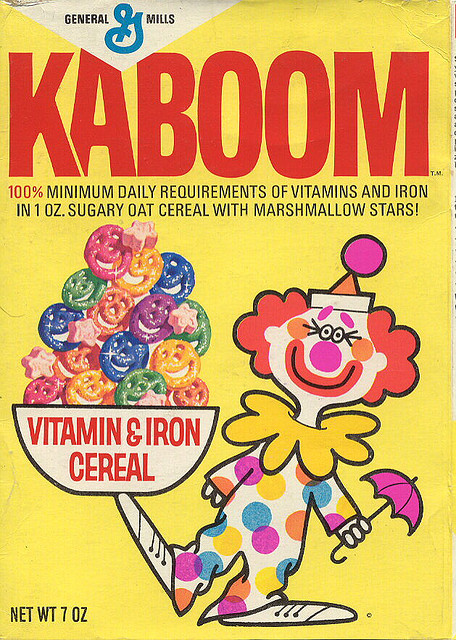It’s nice to know that people in the richest culture in world history can still manage to make themselves utterly miserable by obsessing about things:
Picture this: After spending the summer indulging in ice cream and cocktails, you decide to embrace healthy eating. You cut out refined sugar and packaged food-the kind of nutrient-free junk on any doctor’s warning list. Wheat and dairy are the next to go.
People compliment you on your weight loss; your energy levels rival those of Jillian Michaels. But soon your innocent health kick takes a strange turn. Certain foods – even fruits and veggies – begin to seem dangerous, even unclean.
Within months, you’ve whittled your list of “acceptable” foods down to almost nothing.
This unhealthy fixation with eating healthfully is called “orthorexia nervosa,” a term coined by Dr. Steven Bratman, a Colorado-based physician, in 1997. Since then, orthorexia rates have spiralled in tandem with society’s insistence upon knowing every last detail about its food.
Orthorexia (derived from the Greek “ortho,” which means “correct”) often begins with a noble impulse – to get fit or eat organic – that grows into a self-destructive obsession where fewer and fewer foods meet the orthorexic’s increasingly high standards.
The result is everything from malnutrition to social anxiety as orthorexics avoid restaurants and their friends’ kitchens. At its most extreme, orthorexia can even act as a gateway to anorexia, says Merryl Bear, director of Toronto’s National Eating Disorder Information Centre.
“The gateway possibility is very real because the principles are so similar,” she explains. “Like anorexics, orthorexics prize being pure and in control above all else.” (Orthorexia is currently classified as a form of disordered eating, not a clinical eating disorder, in the Diagnostic and Statistical Manual of Mental Disorders, published by the American Psychiatric Association.)
Since orthorexics value purity, not weight loss, eating becomes a moral act. “A day filled with wheat grass juice, tofu and quinoa biscuits may come to feel as holy as one spent serving the destitute and homeless,” writes Bratman in his book Health Food Junkies: Overcoming the Obsession With Healthful Eating (2004).
H/T to Nicholas Packwood for the link.
Update: Colby Cosh was quick to send me a link to a piece he did on this topic more than a decade ago:
Since becoming a physician, Dr. Bratman has seen many people like his own young self — and some who are worse off — flirting with disaster by depriving their body of vital nutrients. The fads of his youth, far from disappearing, have survived and grown in number: there are even “Breatharians” who believe food to be wholly unnecessary. A few years ago Dr. Bratman coined the phrase “orthorexia” — merging Greek ortho-, meaning righteous, with the stem familiar from “anorexia” — to describe a pathological attachment to dietary theories.
“I never intended the term to be a serious diagnostic entity; you wouldn’t go to a hospital with ‘orthorexia,'” he says. “It’s informal, like ‘workaholic.'” The idea has nonetheless stirred controversy: a Yale University physician sniffed in one critique that “We’ve never had anybody come to our clinic with orthorexia.” Yet fanatical attachment to dietary theories can indeed be hazardous. Macrobiotic diets caused a string of deaths in the 1960s and had to be modified; “metabolic” treatments for cancer, usually involving fasting, occasionally turn disastrous; and vegetarians and vegans must monitor themselves for certain vitamin and mineral deficiencies. In September, an Armenian couple in Surrey, England, were convicted of starving their nine-month-old daughter to death on a “Fruitarian” fruit-only diet.
“People become orthorexic by falling in love with a dietary theory,” says Dr. Bratman. “They run across an idea like macrobiotics or raw-foodism, and embrace it like a religion. We’re not talking about common-sense rules of healthy eating, but theories which reject whole classes of foods and make spontaneous eating [impossible]…There’s a personality type, an obsessive type of person who is prone to embrace them in a quasi-religious way.” This can result in an enticing sense of moral superiority, sometimes coupled with the euphoria associated with partial starvation. But orthorexia also brings crippling feelings of unworthiness after the inevitable slip-ups, when the true believer succumbs to a cookie or a pizza. “There are similarities with anorexia,” he says. “An important one is that anorexics feel like they’ve done something evil when they gain weight, something morally wrong rather than merely unhealthy.” Similarly, the sure sign of an orthorexic is that he associates unhealthy eating with a sense of sin.





